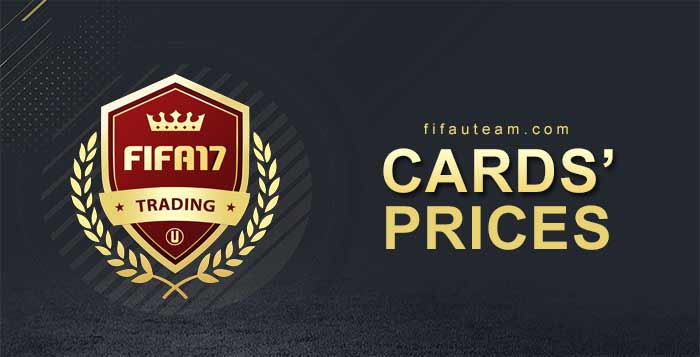You wish you could know whether the FIFA 17 Cards Prices will increase or decrease, don’t you? You don’t know if you should sell, buy or wait. In order to help you overcome these dilemmas, we’re releasing this guide which will give you a general idea of how the FIFA 17 cards prices evolve through the year. Useful for those who enjoy trading and indispensable for those playing Ultimate Team for the first time, this guide shows you in a macro way the key moments in which cards may get cheaper or more expensive. .
Comprehending the Evolution of Prices
Guide’s introductory note
In the past three years we have been collecting information on the prices of hundreds of players’ cards, in different stages of the season. We’ll use them not only in order to predict what is going to happen in FIFA 17, but also to publish other more specific and detailed trading guides.
This series of trading guides we’ve been publishing obeys to a logical sequence. If you haven’t read one of the previous articles, we recommend you do it now. As we have said here before, prices on the FUT market vary according to several factors, like for example the type of card, the player, his real life performance or the release of promotional packs. That’s why it’s impossible to describe with 100% accuracy what is going to happen with the price of a determined card because every case is a different case. What we’re doing here is give you a general idea of the evolution in the average card’s price. It doesn’t mean all cards will behave the same way at some point. We’re talking tendencies only. So now that’s been warned…
Basic Principles
General notions on the market’s behaviour
Let’s start with the most basic of the tendencies: from the beginning and until the end of the game, prices are constantly falling. Forget about building a squad focusing on its valorization in the future, because this will never happen. After a month it’ll be worth less than you paid for and after two months the devaluation will be even bigger. The more time passed, the less your cards will be worth on the market. It’s the natural law.
Along this guide we’ll be illustrating our conclusions through graphics. It’s the clearest and most exact way there is for us to explain the influence each one of these factors have on market prices. It’s good if you’re able to interpret simple graphics such as this one. As you can see, it represents the price variations through time. It’s a descending line and the inclination varies according to the cards.

This representation of ours is too simplistic, though. In cases where the cards’ prices get close to their quick sell value, there is a converging aspect for the price such as the following image shows. So when the cards’ prices fall enough for them to get close to their minimum price rannge, they reach a minimum that’s kept until the end. It doesn’t go below that. The time it takes for a card to reach this final balanced price depends on its initial price. If the card’s initial price is sufficiently high, it will never be close to its quick sell value, that’s more appropriate for what the first image illustrates.
Except for rare situations, investing on players whose prices are close to their quick sell value is a bad strategy. Soon they’ll hit their historic minimum and the price will never increase again.
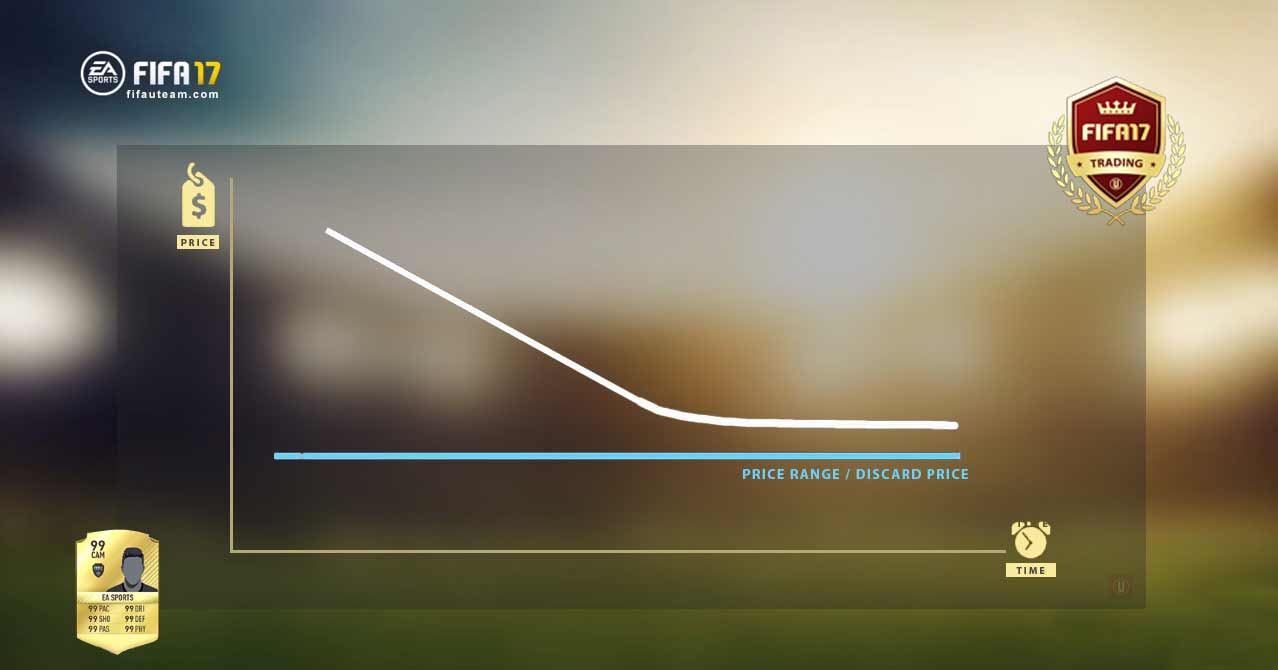
We said that the player cards’ prices decrease from the beginning and until the end of the game. But actually that doesn’t happen on the first day. Prices will go up until they hit a historic maximum after approximately three to four weeks, and only then the tendency is falling. We all get bronze teams initially and little by little we make improvements. So what happens is that the demand for average players is ridiculously higher than the market’s supply at the moment. Once the market has a bigger supply of these players, many people start going for the top players and the law of supply and demand goes back to being active.
The increment on prices during the first weeks is very similar to all cards. However, the price falling that comes right after varies from player to player. Some get more devaluated because they didn’t match the expectations. This period corresponds to the game’s learning curve and at this point players are already sharp enough into the game play to realise if the players are effectively good or if their price needs adjustment.
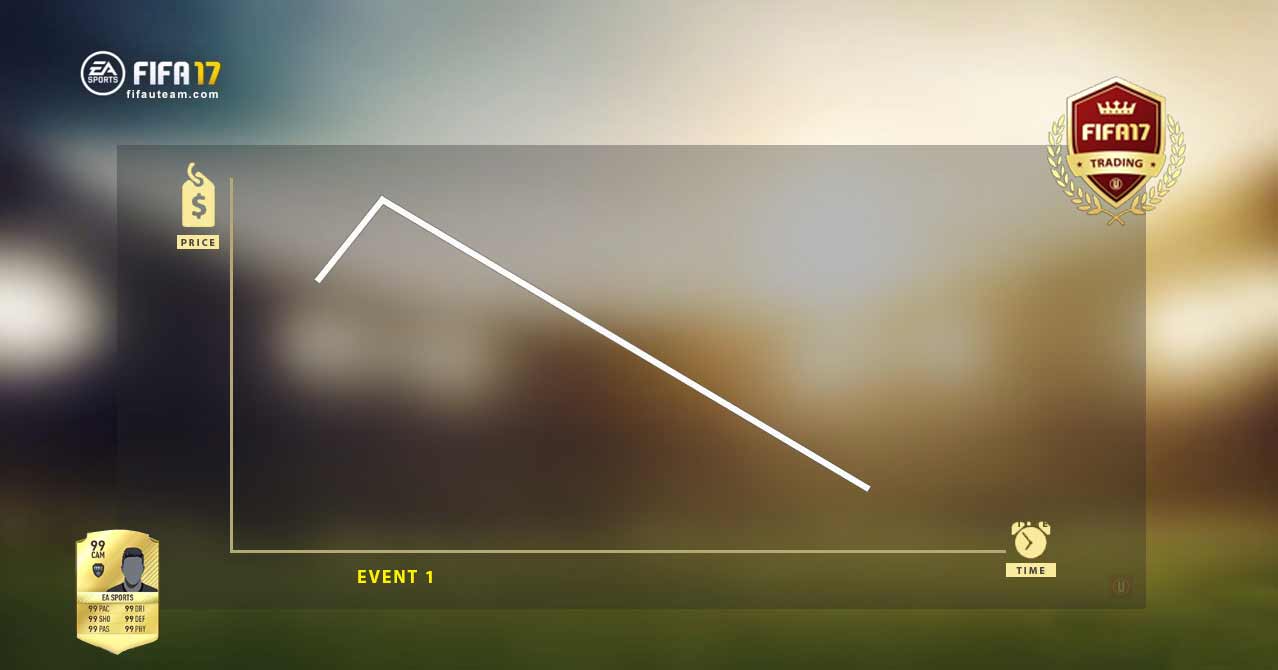
The price behaviour we described here isn’t equal to all players. The most expensive cards tend to lose their value more slowly. This happens because the amount of coins circulating gets bigger with time and more people are able to buy stars. They no longer want to buy ordinary players and so go for the expensive ones, those that are missing for their squad’s completion. More people are willing to pay more to have good players. This makes the most expensive players’ prices get even more distant to the less expensive ones, as you can see on the image below.
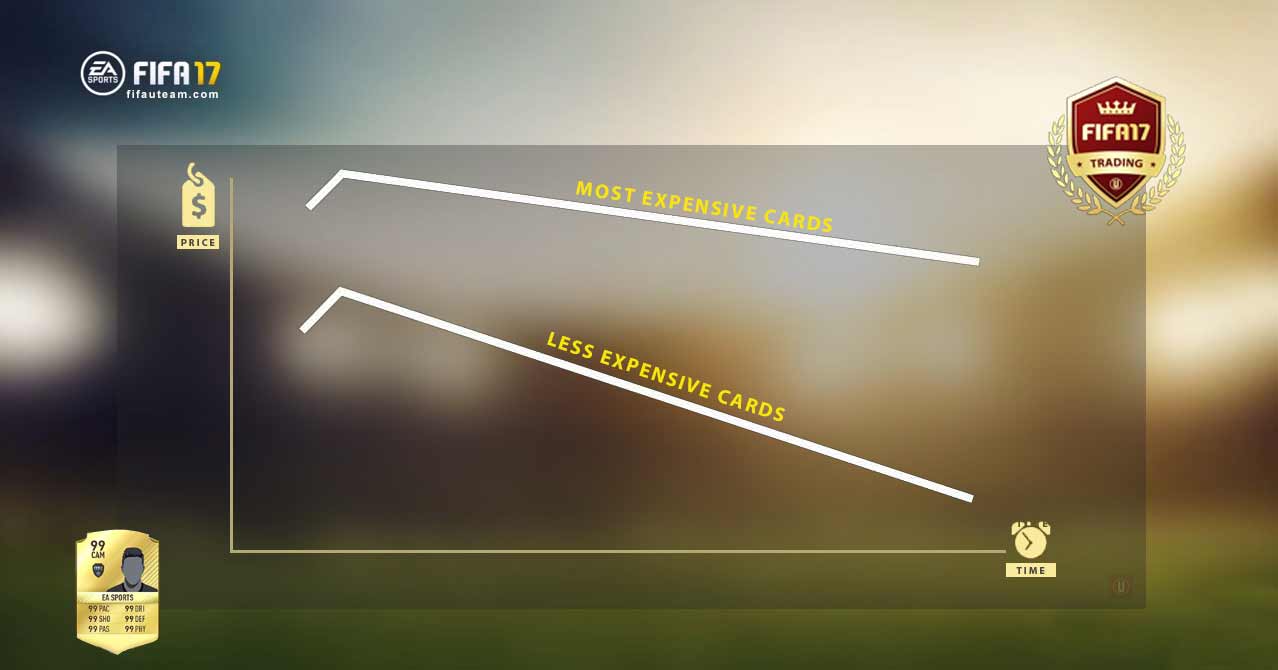
FIFA 17 Cards Prices Evolution Along the Year
How do FIFA 17 cards prices vary along the year?
Now that we’ve explained the general tendencies of the evolution of prices, we’ll look at the key moments in which the natural decrease of prices suffer an alteration.
On FIFA 17, the cards’ prices remained high for longer than they usually did in previous years. This happened mainly because of the introduction of Squad Building Challenges, which inflated several cards and by contagion stopped the price of the rest from decreasing. However, with the first event arriving, Ultimate Scream, the first market devaluation was registered. Between the pre and post Halloween, the cards’ prices decreased more than 15% average.
After the first promotional action, cards keep their slow price decrease until the day EA announce the first edition of FUT United. For it’s an event that is not published with antecedence, the market feels the changes only on the same day. Those price decreases that normally occur progressively through the days before an event aren’t the same with FUT United. With FUT United, it all happens on its first day, reaching up to 10% decreases within just 24 hours. Just as the event ends, the market shows a slight recovery and then goes back to decreasing but at a slower rhythm.
| ESTIMATED FIFA 17 CARDS PRICES INDEX |
| October 2016 | 100 | April 2017 | 27 | |
| November 2016 | 85 | May 1027 | 20 | |
| December 2016 | 60 | June 2017 | 15 | |
| January 2017 | 40 | July 2017 | 20 | |
| February 2017 | 40 | August 2017 | 22 | |
| March 2017 | 32 | September 2017 | 10 |
Between FUT United and Black Friday, the prices decrease in average 25%. Contrary to what many people still think, prices don’t reach a minimum during the Black Friday, but the day before it. In this day, prices start increasing slightly, then this tendency is reversed at the end of the first week of December due to all the speculation surrounding the highly anticipated events that follow. The market hit new minimums on the first day of FUTMas, with an average devaluation of 10% in relation to Black Friday, and in the first day of the TOTY, when the cards are even 5% cheaper. Between these two moments there’s Christmas, a hardly propitious time for buying. Between the 24th and 29th of December, the market normally registers a considerable recovery.
Don’t be fooled by thinking prices are lower during the TOTY. It’s on the days which precede the TOTY that cards are more accessible. Just as the most desired blue cards start invading the market, prices increase. It isn’t too much of an increase, but at the end of the two weeks in which this effect lasts, the prices will have faced an increase of about 10%, resuming then their natural course of decrement.
As the TOTY ends, also do the most influential events to the market’s behaviour. The one event that’s still capable of affecting it is the Community Week. During said event, the market is always under devaluation, accumulating losses of about 7% at the end of one week. After the end of the Community Week, prices maintain themselves more or less stable until the first week of September, when the FIFA 18 demo is awaited and makes the market go down 5% more.

Like we’ve said here, this price behaviour varies according to the players. The more expensive they are, the less their cards follow the market’s natural evolution. The maximum exponents of such irregularity are Messi and Ronaldo. Their prices will even increase through the year, although they can accumulate up to 20% of price loss. The following image, from FIFA 16, proves what we’ve just explained: while Robben, Neymar and Suárez’s cards divert little from the general prices variation, Ronaldo’s shows almost no similarities. That’s why it is necessary to take double caution when analysing the prices of these players.
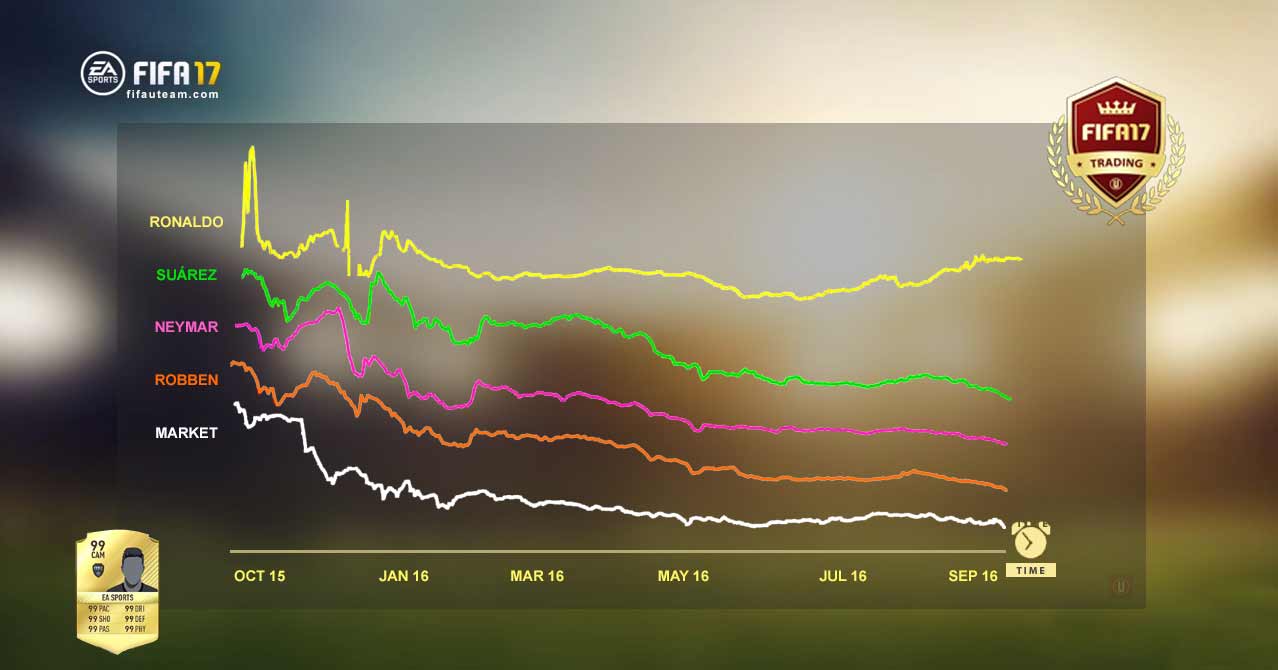
If you weren’t able to collect all the information you need in order to make the right investments, don’t you worry. This guide is intended just to give you a general notion on the evolution of cards’ prices on FIFA 17 Ultimate Team. We’ll go deeper on each one of these events on future guides.
